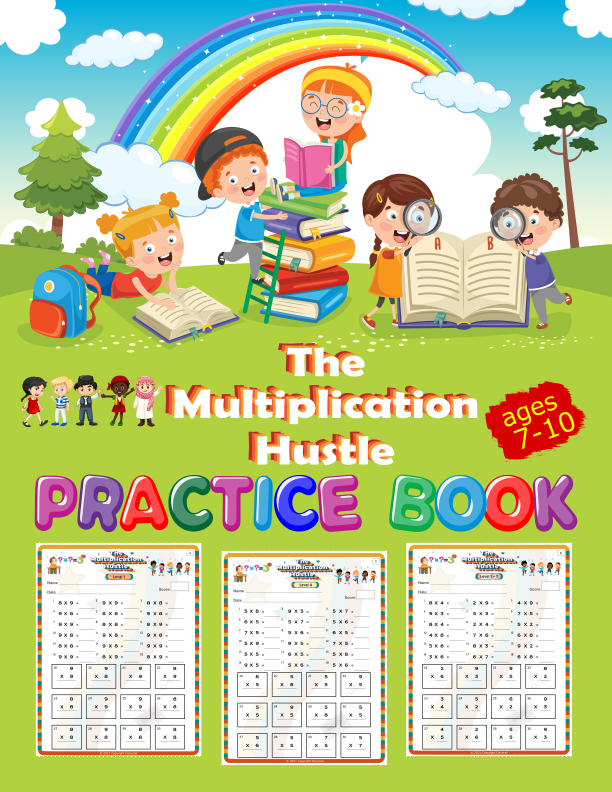Number Sense
As your child grows, they will develop an increasingly sophisticated understanding of numbers and math concepts. Here is a brief overview of the development of number sense by age:
Preschoolers (3-5 years): At this age, children are just beginning to develop an understanding of numbers. They may be able to recognize some numbers, but they don’t yet understand what they represent. They also begin to develop simple counting skills and an understanding of basic addition and subtraction.
Early elementary schoolers (6-8 years): Children at this age begin to develop a more sophisticated understanding of numbers. They learn to count beyond 100 and can begin to understand place value (the value of each digit in a number). They also start to grasp basic multiplication and division concepts.
Upper elementary schoolers (9-12 years): By this age, children have a strong understanding of numbers and place value. They can fluently add, subtract, multiply, and divide large numbers. They also begin to develop an understanding of fractions, decimals, and percents.
Although this post mainly references preschoolers to higher education, development of math concepts age by age can also be accessed from the Scholastic chart for toddlers between 0 to 3 years.
Addition and Subtraction
As children develop, they start to understand the basic concepts of math. Addition and subtraction are two of the first concepts that they learn.
Adding and subtracting numbers is a skill that children need to learn in order to be successful in math. There are many ways to help children develop this skill. One way is to provide them with opportunities to practice adding and subtracting numbers. This can be done through games, puzzles, and other hands-on activities.
Another way to help children develop their addition and subtraction skills is to teach them strategies for solving problems. For example, you can teach them to use mental math strategies, such as counting up from the larger number when adding or counting back from the smaller number when subtracting. You can also teach them to use estimation strategies, such as rounding up or down when adding or subtracting.
Finally, it is important to encourage children to persevere when they are solving problems. If they get stuck on a problem, encourage them to keep trying until they find a solution. Help them to see that even if it takes them a bit longer, they can still figure out the answer if they don’t give up.

Multiplication and Division
From an early age, children begin to develop an understanding of multiplication and division. This understanding progresses as they grow older and encounter more complex problems.
In the early years, children learn about multiplication and division through simple counting games. They begin to understand that when they divide a group of objects into two equal parts, each part has the same number of objects as the whole group. Similarly, when they double a number, they understand that they are adding two groups of that number together.
As children move into elementary school, they begin to learn more formal ways of multiplication and division. They learn about multiplication facts and how to use them to solve problems. They also learn strategies for dividing larger numbers. By the time they reach middle school, children should be able to fluently multiply and divide large numbers.
This understanding is key to future success in mathematics, because learning multiplication and division facts is an important part of any math education. By mastering these facts, students lay the foundation for success in more advanced math concepts. Multiplication and division are both operations that are used extensively in everyday life, so it is important for students to understand how they work. Programs like the Multiplication Hustle are excellent resources to help students memorize their times tables quickly.
Geometry
Geometry is the branch of mathematics that deals with the properties and relations of points, lines, angles, surfaces, and solids. In elementary school, children learn basic concepts such as length, area, and volume. As they progress to middle school, they learn more advanced concepts such as area of irregular figures, volume of cylinders and cones, and surface area of spheres. In high school, students learn even more advanced concepts such as coordinate geometry and three-dimensional figures.
Measurement
As children develop, they go through a number of stages in their understanding of mathematics. This section will outline the main ideas that students should be exposed to at each stage, from preschool through high school.
One of the most important things for children to learn is how to measure. This is a critical skill that they will use throughout their lives. There are a number of different ways to measure, and it is important for children to understand all of them. Here are some of the concepts that children should learn about measurement:
- Length: This is probably the most basic form of measurement. Children should learn how to measure length using standard units such as inches, feet, and centimeters. They should also learn how to estimate length by eye.
- Area: This is a two-dimensional form of measurement. Children should learn how to measure area using square units such as square feet or square meters. They should also be able to estimate area by eye.
- Volume: This is a three-dimensional form of measurement. Children should learn how to measure volume using cubic units such as cubic feet or cubic meters. They should also be able to estimate volume by eye.
- Weight: This is a measurement of mass, which is the amount of matter in an object. Children should learn how to weigh objects using standard units such as pounds or kilograms. They should also be able to estimate weight by eye.
- Time: This is a measurement of duration.

Data Analysis and Probability
One of the most important things that parents can do to help their children succeed in math is to make sure they understand the development of math concepts age by age. This will allow them to better monitor their child’s progress and know when they may need extra help.
In the early years, math concepts are mostly developed through play. Children learn about numbers and counting through games and everyday activities. As they get older, they begin to understand more abstract concepts like addition and subtraction.
In the elementary years, children start to learn more formal mathematical concepts. They begin to understand things like place value and operations. These concepts are taught through a combination of direct teaching and hands-on activities.
As children move into the middle school years and into higher education, they start to learn more advanced mathematical concepts. They learn about algebra, geometry, and trigonometry. These concepts are usually taught through a mix of direct instruction and problem solving.
Parents can support their child’s math development by making sure they provide plenty of opportunities for hands-on learning. They should also create a positive attitude towards math in the home by helping their child see it as a fun challenge rather than a chore.
Algebra
Algebra is a branch of mathematics that deals with the study of symbols and the rules for manipulating those symbols. In elementary algebra, we learn how to solve equations and how to graph linear equations. In intermediate algebra, we extend these concepts to quadratic equations and other types of functions. In advanced algebra, we explore more abstract ideas such as imaginary numbers and exponentiation.
Algebra is a crucial tool for solving mathematical problems, but it can also be used as a tool for exploring mathematical concepts. By studying algebra, we can develop a better understanding of arithmetic and geometry. We can also gain insights into the structure of the universe itself.
Conclusion
Math development is a gradual process that begins in infancy and continues throughout life. Although some skills are developed earlier than others, there is no one “right” age to develop any particular math concept. Each child develops at his or her own pace, and it is important to provide opportunities for all children to explore mathematical concepts in a variety of ways. By understanding the typical sequence of math development, educators can better support all students as they progress through their math journeys.


